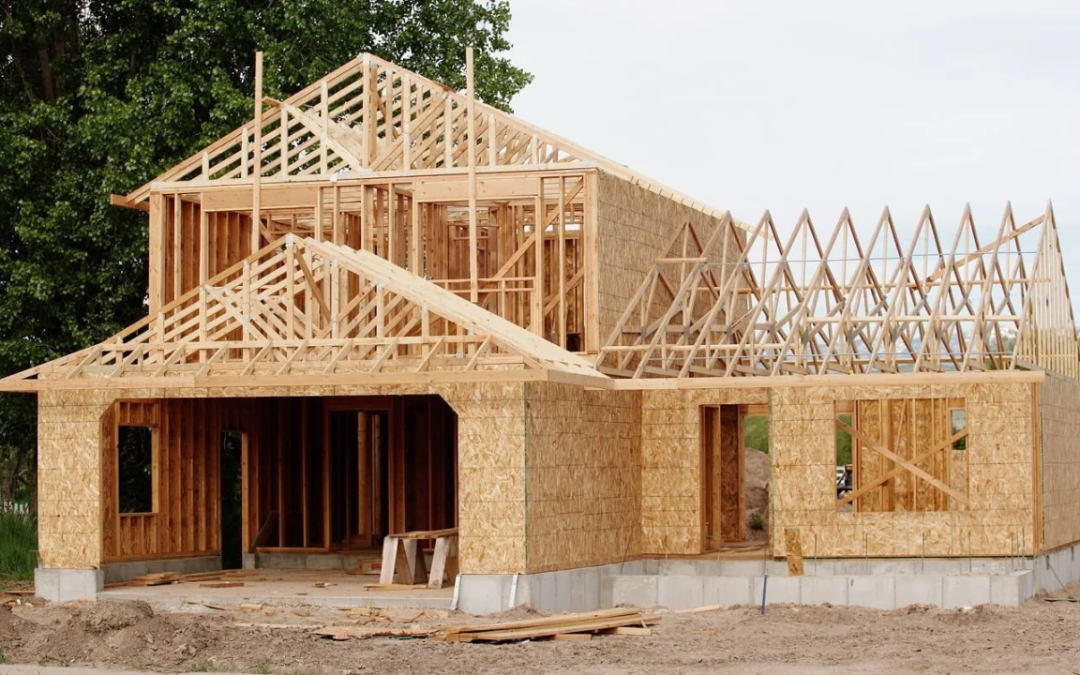Building a house is one of the biggest achievements in one’s life thus selecting the appropriate materials is extremely important for the stability, usage, and appearance of the house. Whether you’re installing a new house or beginning a custom project, this outline of the key materials needed to build a house will help you navigate each stage of the process. This blog will guide you through the best building materials for use in the construction of residential buildings and this will enable you to make appropriate decisions and which is most appropriate for you.
7 Types of Building Materials Used in Construction
The construction industry provides a vast number of materials, and all of them have different characteristics and functions. However, both must be manufactured or processed before being used in the building. Materials used in building construction include the following:
1. Foundation: Building a Strong Base
The foundation particularly holds a prestigious position and is regarded as one of the most important phases of construction. Regarding the construction process of a house, the materials published should offer stability and support to all the structures. Here are the primary materials used for building a foundation:
- Concrete: One of the most used materials for home construction is concrete as it forms a strong foundation capable of supporting so many types of soils. It is often reinforced with one rod or mesh to enhance tensile strength in the structure.
- Rebar (Reinforcing Steel): Combined with concrete, rebar increases tensile strength several times, so the foundation can support heavy loads and compensate for such natural phenomena as soil swelling or earthquakes.
- Gravel: In many cases before concrete pouring, gravel is usually placed to ensure a proper grade is achieved. It also aids in water discharge to eliminate any possibility of dampness under the structure’s foundation.
When engaging in the construction of house building materials, you are guaranteed to be strong, durable, and resistant to environmental conditions.
2. Framing: The Skeleton of the House
Another important step is known as the framing step. Framing is the construction of the framework that gives your home the general layout or “skeleton” as some people call it. There is nothing more important than making the right decision on the materials used in home construction that support the roof, walls, and floor.
- Wood: Wood is by far the most commonly used framing material in residential construction because wood is flexible, accessible, and affordable. Many people regularly use wood like pine and fir.
- Steel: In the modern world of construction, steel is being used more and more because it has high strength and is fire resistant. Although it costs more than wood, it is a stronger type that cannot warp, mold, or attract termites.
- Engineered Wood Products: These are laminated veneer lumber (LVL) and glued laminated beams. This is achieved by combining wood fibers and synthetic resin adhesives that provide more strength than normal wood.
Wood or steel: This decision will be based on factors such as climate or money, but both will provide adequate structure for the home.
3. Walls and Insulation: Keeping the Home Comfortable
Walls do more than separate rooms; they act as insulators of light, heat, and sound and act as barriers to harsh weather conditions. At this stage, the necessary materials for house construction are known to define the efficiency and the comfort of the living environment.
- Bricks: Bricks are one of the traditional construction materials that could be used to construct a house due to their thermal properties, durability, and beauty. Such are designed to be applied to the exterior side of buildings, they are very appropriate in terms of providing shelter from heat, cold as well as moisture.
- Concrete Blocks: Concrete blocks are cheaper and Rio, fire-resistant as opposed to bricks, and very strong. It is applied in the construction of walls both on the outer part of the building and the inner side.
- Insulation Materials: Insulation is indispensable when you want your home to be energy efficient. Many insulating materials are used in constructing a house such as fiberglass, foam boards and spray foam. Both have various R-values, a vital parameter determining the effectiveness of insulation, and depend on the climate.
To guarantee sustainable insulation walls and insulation materials pick a quality that will offer the best and best output as far as insulation is concerned.
4. Roofing: Protection from the Elements
The roof is one of the necessities when constructing a house because it shields the house from rain, snow, heat, or wind. It is also of great importance in improving the looks of the home, as would be evident from the rest of this piece.
- Asphalt Shingles: Asphalt shingles are probably the most popular type of roofing material because they are inexpensive, reliable, and come in many different shades. They come with decent water resistance and can be installed easily.
- Metal Roofing: Rising in demand, metal roofing is fire resistant, lasts longer than other products, and is energy efficient. The life expectancy of shingles is usually considerably longer than such types of roofs which can cost more to install than other roofing materials.
- Clay or Concrete Tiles: These tiles should preferably be installed in houses constructed in regions with high temperatures since they provide sufficient thermal insulation. They are also very long-lasting, and most of them are designed to serve up to 50 years and above if well maintained.
Ideally when choosing materials to build a home, should think about the climatic conditions of the region of the roofs.
5. Flooring: Balancing Durability and Aesthetics
The flooring materials you choose for the home should be able to handle a lot of traffic, be comfortable, and enhance the look of the home’s interiors. Here are the most common materials to build house flooring:
- Hardwood: Classic as well as practical, this is a flooring type that is always popular, in addition to being sturdy and friendly underfoot. For example, oak, maple, and cherry are some common ones.
- Tile: Ceramic and porcelain tiles are very durable, completely waterproof, and available in a variety of looks and colors, making them ideal for use in kitchens, bathrooms, hallways, and other areas of the home.
- Laminate and Vinyl: These are cheaper products than hardwood and tile. Laminate looks similar to wood and vinyl can look like wood or tile and is more versatile in terms of design at a lower cost.
Flooring is mostly selected based on its ability to meet these three aspects of use and when done this way, it fits well into the home.
6. Windows and Doors: Enhancing Light and Security
Windows and doors also perform other functions for the building such as insulators and security. Thus, the best building materials used for these features should be both efficient and decorative.
- Wood: These types of frames provide very good insulation and have a traditional and practical look. They can be painted or stained to meet specific design requirements for any decor.
- Vinyl: Commercial products such as vinyl windows and doors are very strong, and also conserve energy. They are easy to repair if you lack the skills to maintain them and they come in a variety of colours and designs.
- Aluminum: An even more contemporary option is aluminum frames – this option is not too heavy and does not rust. Still, they offer the least insulating quality compared to wood or vinyl doors.
Choosing quality windows and doors will guarantee the long-term comfort and security of the home.
7. Finishing Materials: Bringing the House to Life
Finishing materials add the finishing touches to your home and help define your preferred color and style. These include paint, Leader, Evans, and many others that are essential materials needed for house construction that provide style and functionality.
- Paint and Plaster: These materials are crucial that are important in the finishing of interior and exterior walls. Weather-resistant paint should be used on the exterior of your home while paint and plaster used on the interior of your home add texture and color.
- Cabinets and Countertops: Marble, wood, and laminate are common materials used on cabinets and countertops. These should be durable and preferably easy to clean, especially in areas like the kitchen and bathroom.
With the right finishing touches, your house will feel like a home, reflecting your personal style and functional needs.
Conclusion
Choosing the proper inputs for building a home is important so that the home is durable, comfortable, and efficient to live in. The exterior and interior aspects of your home are not in vain, from ground to roof, and all together give your home a unique look. Quality is a key principle at Christopher Custom Homes as the company seeks to give its customers high-quality materials and works to improve the construction of their dream homes.
Whether you are building your home from the ground up or renovating an existing structure, the type of material you choose can make a difference. From concrete and steel to wood and tiles, these home-building materials will give you the ability to build your home with the aesthetic you want to achieve, while also providing you with the comfort and stability you need for your home in the long run. We will help you make the right decision when choosing the type of frame for your next project.

